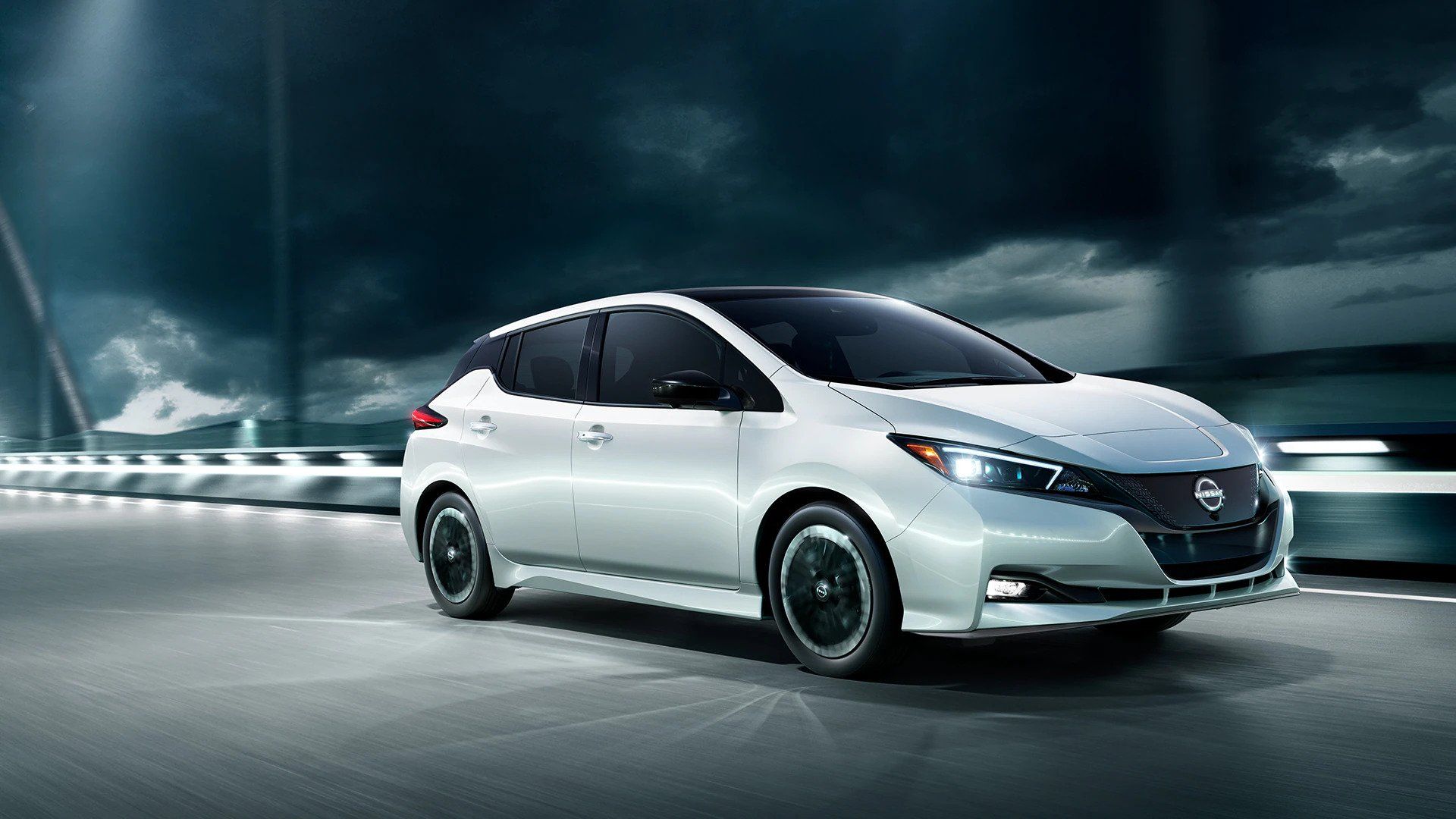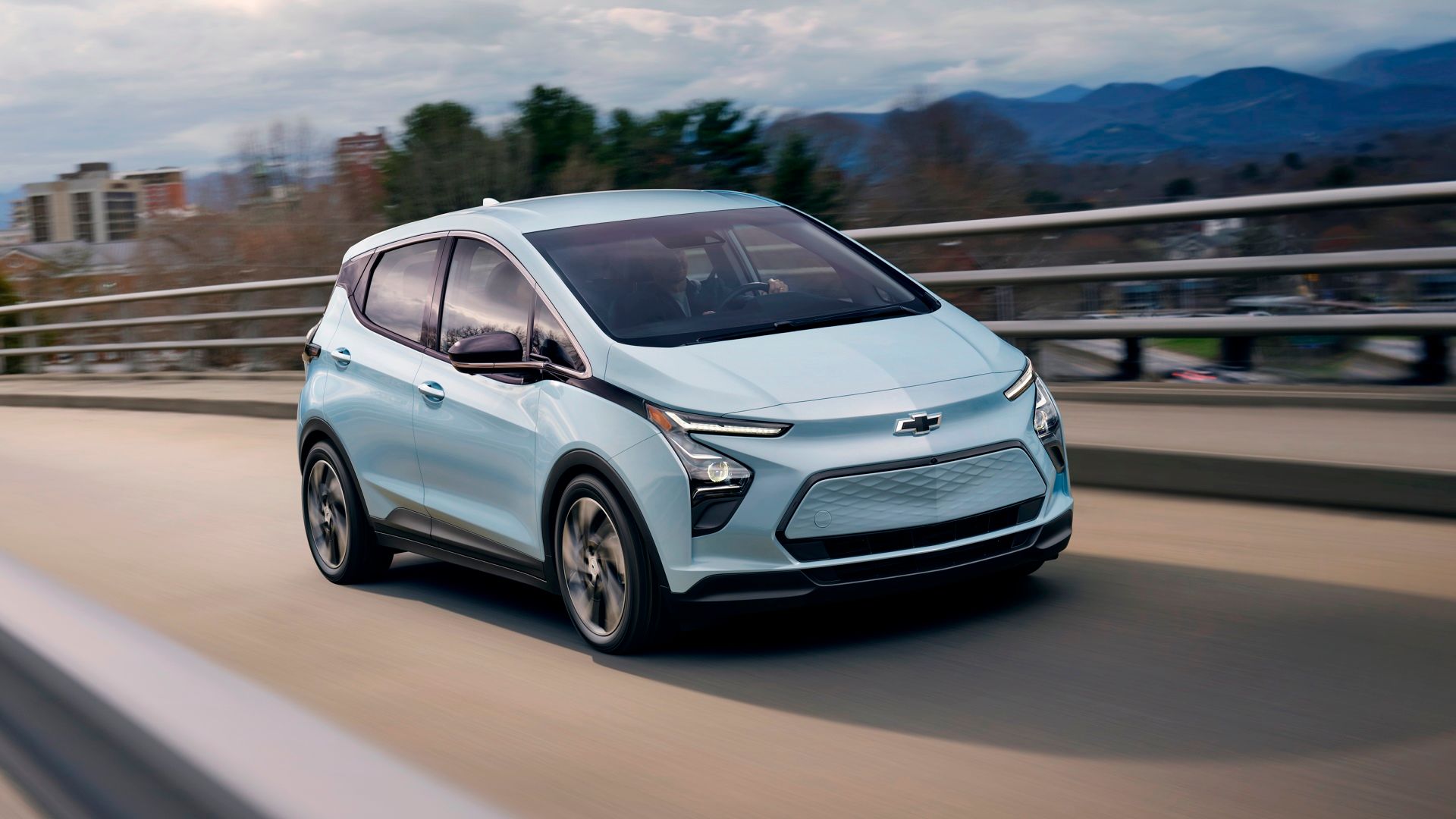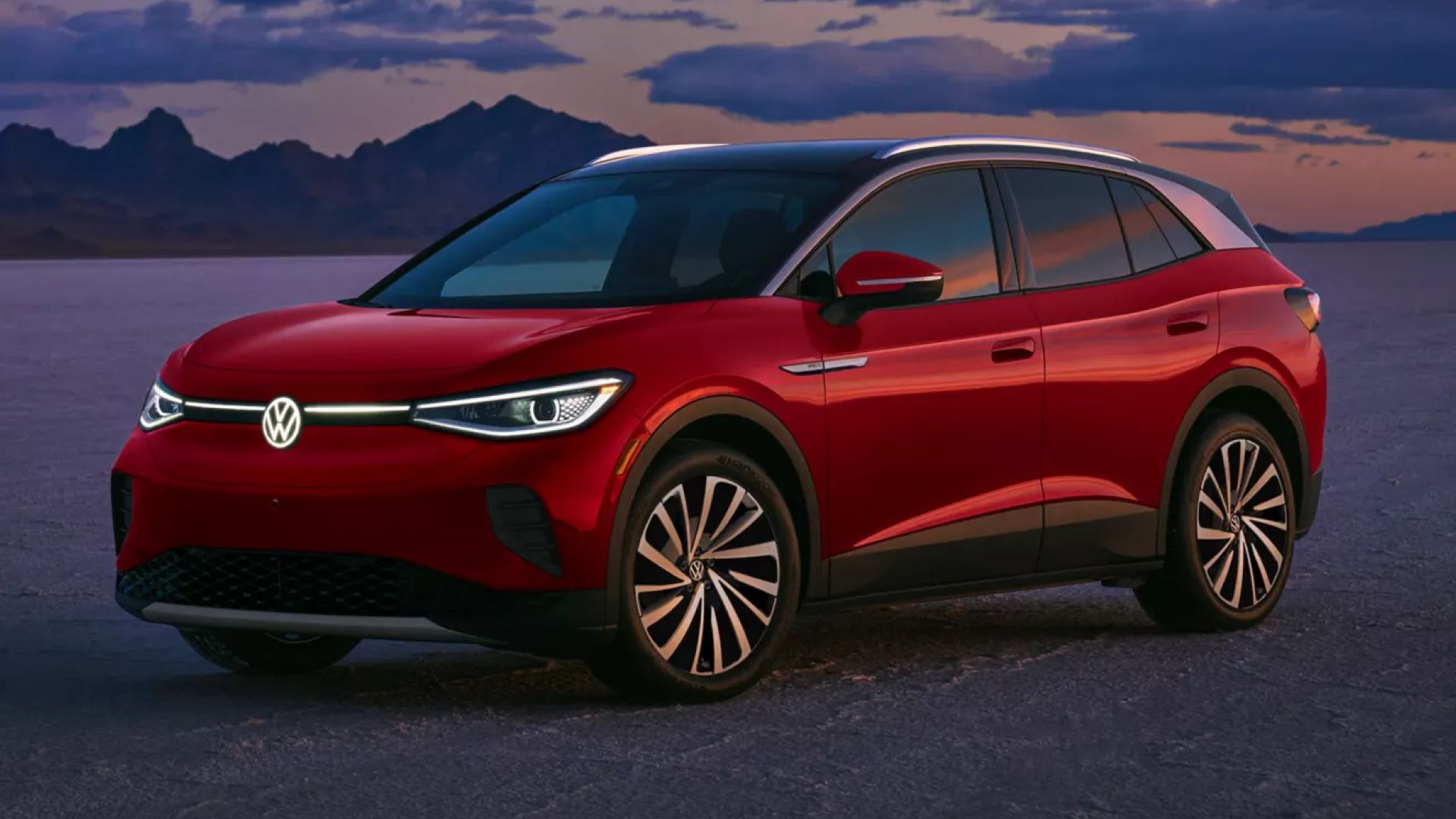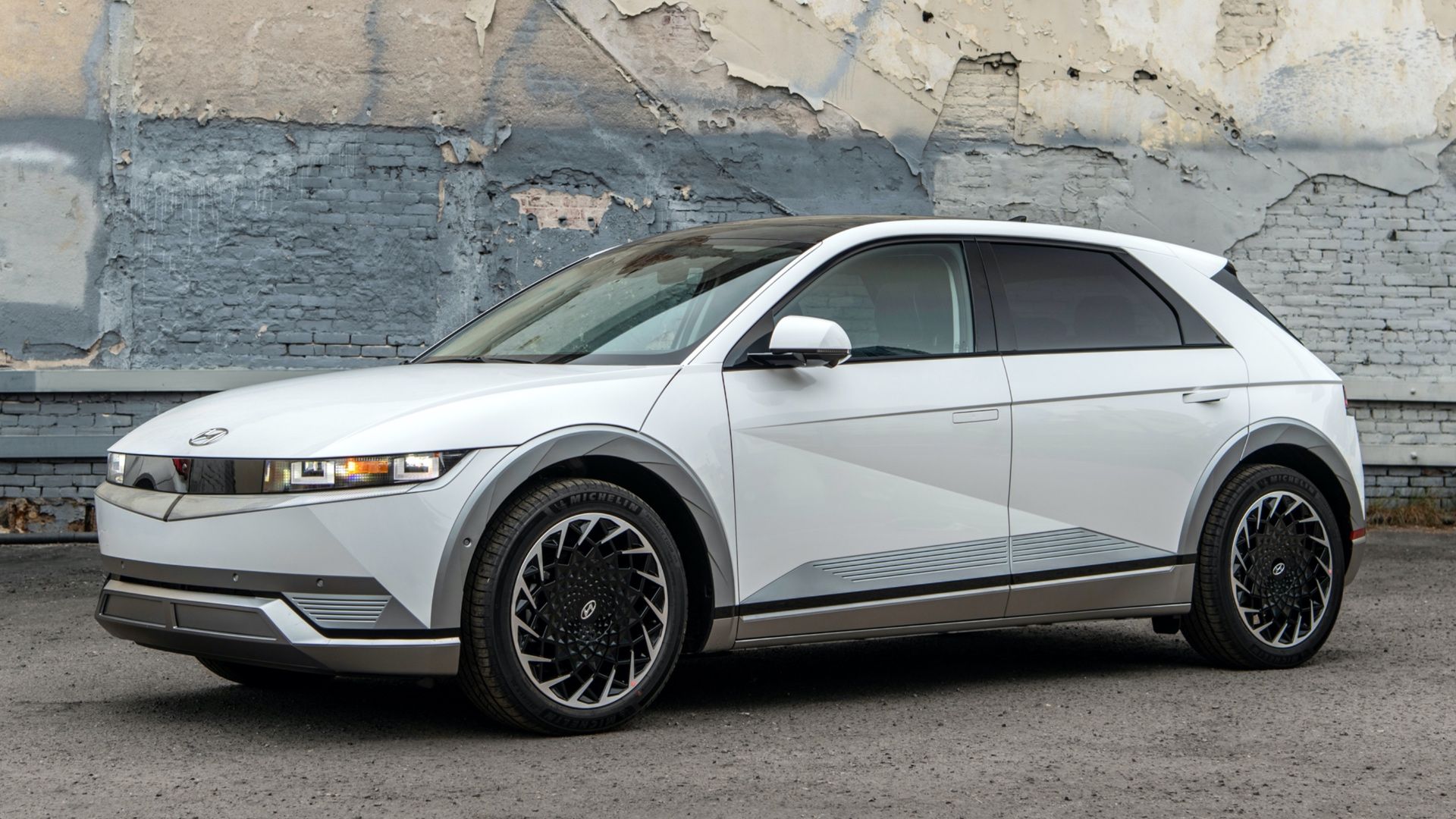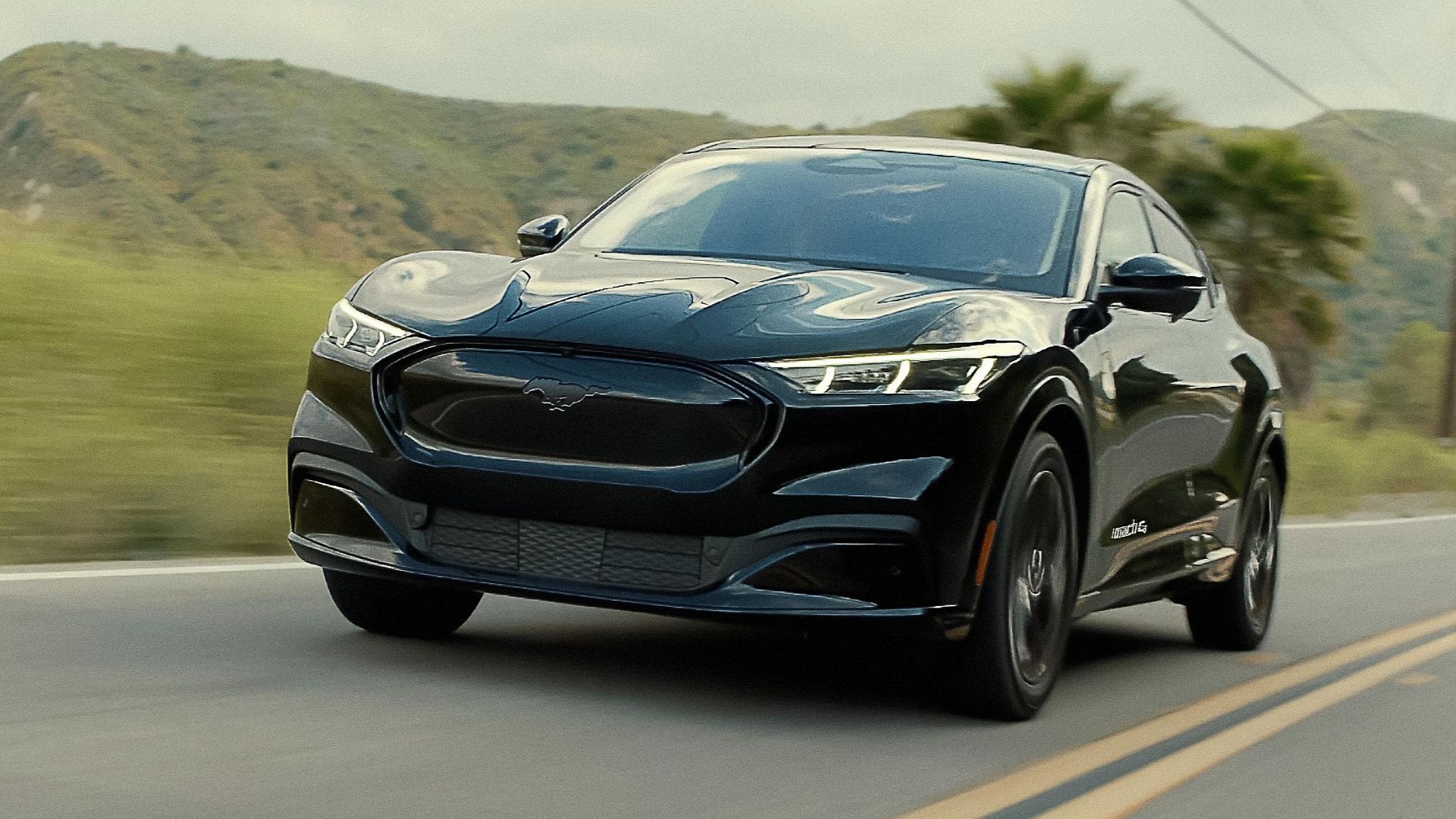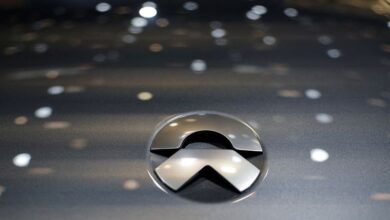Used Electric Cars You Can Get Crazy Cheap At One Year Old
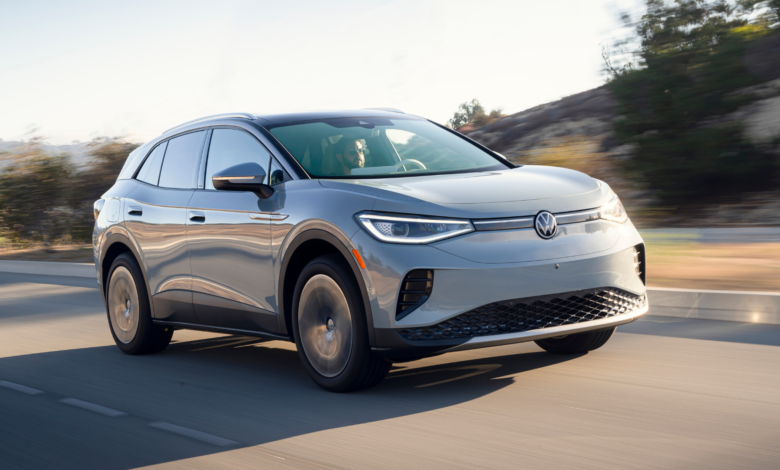
Summary
- EV resale values are plummeting due to evolving technology and rapid changes in the market, making hybrids a hot commodity.
- Tesla’s price cuts have contributed to the drop in EV resale values, affecting those who owned EVs prior to the cuts.
- Consider buying slightly used EVs for better value, as rapid depreciation rates make buying one-year-old models more cost-effective.
Electric vehicles (EVs) have recently gained attention, though not necessarily for the best of reasons. Specifically, EV resale values have become a concern as more and more EVs enter the used car market. Concerns surrounding battery longevity as well as the convoluted and fragmented charging infrastructure of the United States are some of the contributors to the lower resale values of EVs, which is why hybrids have become a hot commodity as of late.
Additionally, EV technology, unlike an internal combustion engine (ICE) vehicle, is evolving rapidly. An EV in 2024 will be a lot less innovative than an EV in 2030 as EV drivetrains get more efficient, while batteries become more affordable, more energy-dense, and a lot safer. Think of it as an iPhone moment, wherein an iPhone in 2007 is vastly different from an iPhone in 2010. Now in 2024, the upgrade cycle of the iPhone is extremely incremental.
At the same time, Tesla has declared a price war of some sort in a bid to maintain sales momentum for the brand. This is good for new car buyers, but not for those who owned a Tesla or any EV prior to those cuts. That’s because Tesla’s massive price cuts have also been a major contributor to plummeting EV resale values.
Nevertheless, we are now feeling the effects of all of these decisions today, and if you’re in the market for a slightly used (one-year-old) EV, then you’ll be glad to know that you’re going to be in for a treat. Here are eight EVs according to iSeeCars, whose depreciation is so rapid just after a year of ownership, you’d be better off buying these slightly used as opposed to brand new.
This Country Is Leading The Way For EV Sales
EV sales are rising around the world, but this country has adopted electrification the best.
In order to give you the most up-to-date and accurate information possible, the data used to compile this article was sourced from various manufacturer websites like Nissan, Chevrolet, Volkswagen, Hyundai, Kia, Ford, and Mercedes-Benz. and other authoritative sources, including iSeeCars. The models have been listed from cheapest to most expensive based on their resale value.
1 Nissan Leaf
$18,756 (45.7 Percent 1-Year Depreciation)
The Nissan Leaf is one of the most affordable EVs you can buy brand-new, but it’s also one of the most affordable EVs you could buy slightly used. Why? Because after just a year of ownership, the Nissan Leaf is expected to lose 45.7 percent of its original value. So, yes, while the Leaf is indeed affordable, you’re better off buying a one-year-old model. But as you’ll also see later, there’s another major reason why you probably want to avoid the Leaf altogether.
Performance Specifications
|
Nissan Leaf S |
Nissan Leaf SV Plus |
|
|
Drivetrain |
Single motor, FWD |
Single motor, FWD |
|
Transmission |
1-speed AT |
1-speed AT |
|
Horsepower |
146 hp |
214 hp |
|
Torque |
236 lb-ft |
259 lb-ft |
|
EPA Range |
149 miles |
212 miles |
|
Battery Size |
40 kWh |
60 kWh |
|
0-60 MPH |
N/A |
N/A |
(Data was collected from Nissan)
One of the major reasons why the Leaf depreciates so fast is because it’s such an outdated EV in 2024. Remember, EV technology rapidly evolves, but it seems the Leaf was stuck in the early 2010s with its so-so range, and *gasps* a near-obsolete ChaDeMo port. Yes, apart from the Mitsubishi Outlander PHEV, the Nissan Leaf is the only other new car today with this outdated port standard initially introduced by Japanese automakers. And as North America is set to universally adopt Tesla’s North American Charging Standard (NACS) port, then good luck using a public charger without an adapter.
Pros
- Affordable Price
- Good Space For Its Size
- Versatile
Cons
- Range is just okay
- ChaDeMo port is being phased out
- Outdated EV drivetrain
2 Chevrolet Bolt EV
$22,229 (28 Percent 1-Year Depreciation)
The Chevrolet Bolt EV was a revolution of sorts when it first came out, but even before it was discontinued recently, the Bolt EV eventually gained traction as sales actually grew for the full year 2023. Thanks to factors like the Bolt EV being eligible for the $7,500 Federal Tax Credit of the Inflation Reduction Act, this electric hatch can be had for as low as around $19,000. Remember, we’re talking about a brand-new EV here, which is why it’s great to hear that General Motors has decided to work on a second-generation Bolt.
Performance Specifications
|
Chevrolet Bolt |
|
|
Drivetrain |
Single motor, FWD |
|
Transmission |
1-speed AT |
|
Horsepower |
200 hp |
|
Torque |
266 lb-ft |
|
EPA Range |
259 miles |
|
Battery Size |
65 kWh |
|
0-60 MPH |
6.5 seconds |
(Data was collected from Chevrolet)
However, thanks to Bolt EV’s potential price tag of around $19,000 when the incentive is taken into account, this might be a case where it’s better to buy a brand-new one as opposed to a slightly used model. Even when taking into account the Federal Tax Credit of $4,000 for used EVs, that would mean that the average price for a used Bolt EV would hover around the $18,000 figure.
Pros
- Good range
- Flexible interior
- Spacious for its size
Cons
- Slow to charge
- Cheap interior
- Jellybean looks

Everything You Need To Know About Tesla’s North American Charging Standard
Tesla’s NACS has taken over the EV world with many other automakers joining the rig. Here’s what you need to know.
3 Chevrolet Bolt EUV
$23,320 (28.2 Percent 1-Year Depreciation)
Essentially the rugged crossover version of the Bolt EV, the Bolt EUV adds rugged styling to what is otherwise a humbly-styled electric hatchback along with added ground clearance for mild off-roading duties. Like the Bolt EV, the Bolt EUV is also eligible for the $7,500 tax credit, which when applied, a brand-new Bolt EUV will only cost a little over $20,000. Again, just like the Bolt EV, the Bolt EUV is probably one of those EVs you’d rather buy new as opposed to used–even when taking into account the $4,000 tax credit for used EVs.
Performance Specifications
|
Chevrolet Bolt EUV |
|
|
Drivetrain |
Single motor, FWD |
|
Transmission |
1-speed AT |
|
Horsepower |
200 hp |
|
Torque |
266 lb-ft |
|
EPA Range |
247 miles |
|
Battery Size |
65 kWh |
|
0-60 MPH |
7.0 seconds |
(Data was collected from Chevrolet)
While the Bolt EUV may look nicer and more rugged, that comes at the expense of range. Its EPA-estimated range of 247 miles is 12 miles less than the Bolt EV. It also doesn’t help that the Bolt EUV likewise has DC charging capabilities of up to 50 kW only. Nevertheless, that 12-mile difference is probably worth the added styling for some people.
Pros
- One of America’s most affordable EVs
- Rugged looks add style to a humble hatch
- Spacious interior
Cons
- Slow DC charging speeds
- Cheap interior
- Slight range degradation from Bolt EV
4 Volkswagen ID.4
$31,870 (32.9 Percent 1-Year Depreciation)
The Volkswagen ID.4 is one of the most affordable electric crossovers you can buy today. Styling-wise, the ID.4 looks great, if not striking, whilst its easy-driving nature that’s focused on comfort and refinement is perfect for families. However, the most affordable ID.4 only has 206 miles of EPA-estimated range, which means that the ID.4 in base Standard trim won’t be anyone’s primary car anytime soon. Finally, while the interior looks nice and minimalist, the ID.4 has been plagued with a poorly designed infotainment system. Experience this aspect for yourself first before splurging on an ID.4.
Performance Specifications
|
ID.4, ID.4 S |
ID.4 Pro, ID.4 Pro S |
ID.4 Pro AWD, ID.4 Pro S AWD |
|
|
Drivetrain |
Single motor, RWD |
Single motor, RWD |
Dual motor, AWD |
|
Transmission |
1-speed AT |
1-speed AT |
1-speed AT |
|
Horsepower |
201 hp |
282 hp |
335 hp |
|
Torque |
229 lb-ft |
402 lb-ft |
501 lb-ft |
|
EPA Range |
206 miles |
291 miles |
263 miles |
|
Battery Size |
62 kWh |
82 kWh |
82 kWh |
|
0-60 MPH |
7.1 seconds |
5.9 seconds |
4.9 seconds |
|
Towing Capacity |
2,200 lbs |
2,200 lbs |
2,700 lbs |
(Data was collected from Volkswagen)
Going up the trim ladder to the Pro models will net you the most range for an ID.4 with 291 miles of EPA-estimated range. It also must be noted that, while these slightly-used prices look good, the ID.4 is also eligible for the $4,000 tax credit for used EVs, bringing down the average slightly-used price to $27,000. Also, worth noting is that a brand-new 2024 model year ID.4 is eligible for the $7,500 federal tax credit, which raises the possibility that future ID.4s may have a slight price drop.
Pros
- Easy-going nature
- Refined driving dynamics
- Versatile interior
Cons
- Base trim has inadequate range
- Poorly-designed infotainment system
- Some cheap-feeling plastics inside
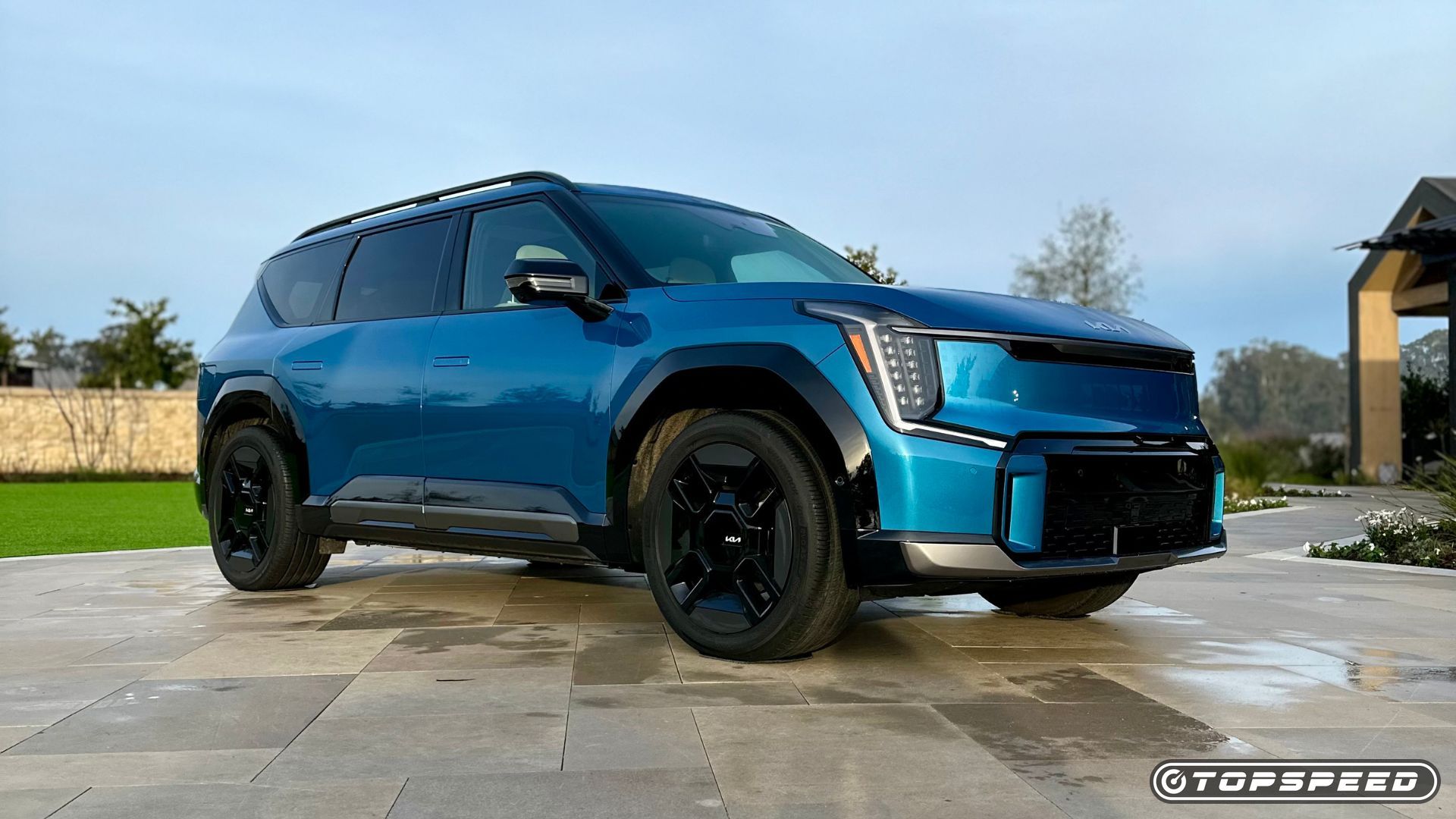
The Best Electric SUV Lease Deals In 2024
Getting an electric vehicle doesn’t have to cost an arm and a leg, which is why here’s a list of the best electric SUV deals you can get on lease.
5 Hyundai Ioniq 5
$34,303 (32.9 Percent 1-Year Depreciation)
The award-winning and highly-coveted Hyundai Ioniq 5 has taken the EV market by storm. The stylish retro-futuristic looks, ingenious features, and cleverly designed lounge-like interior have been loved by critics and owners alike. For as long as you avoid the base SE Standard Range model with its EPA-estimated 220-mile range, the Ioniq 5 has enough range to be competitive in the class.
Performance Specifications
|
SE Standard Range |
SE, SEL, Limited RWD |
SE, SEL, Limited AWD |
|
|
Drivetrain |
Single motor, RWD |
Single motor, RWD |
Dual motor, AWD |
|
Transmission |
1-speed AT |
1-speed AT |
1-speed AT |
|
Horsepower |
167 hp |
225 hp |
320 hp |
|
Torque |
258 lb-ft |
258 lb-ft |
446 lb-ft |
|
EPA Range |
220 miles |
303 miles |
260 miles |
|
Battery Size |
58 kWh |
77.4 kWh |
77.4 kWh |
|
0-60 MPH |
N/A |
7.4 sec. |
4.5 sec. |
|
Towing Capacity |
N/A |
2,300 lbs |
2,300 lbs |
(Data was collected from Hyundai)
Finally, the Ioniq 5 has an 800-volt architecture that, in the case of the Long Range models with its 77.4 kWh battery, allows for up to 350 kW of DC fast charging speeds, though this is limited to a still impressive 175 kW for the Standard Range’s 58 kWh battery. That 800-volt architecture also allows for bidirectional charging capabilities, which allows for vehicle-to-load (V2L) features that basically let the Ioniq 5 become a power bank for appliances when going on camping trips or whenever there’s a power outage.
Pros
- Retrofuturistic looks
- Ingenious interior design
- Clever 800-volt architecture
Cons
- Cargo space not as big as rivals
- Surprisingly needs wires for smartphone mirroring
- Standard Range model not as competitive in terms of range
6 Kia EV6
$36,243 (33.3 Percent 1-Year Depreciation)
The corporate twin of the Hyundai Ioniq 5, the Kia EV6, offers similar levels of ingenuity, but in a design that’s more sporty and rakish as opposed to embracing retrofuturism. The sleeker and rakish looks, however, reduce the EV6’s interior ingenuity. The sportier shape reduces rear headroom slightly, those the EV6 is still spacious thanks to the clever design of its E-GMP architecture.
What it loses from the Ioniq 5 is the clever center console that can be slid forward and backward and the magnetized surface on the left side of the driver’s digital gauges. The drive is also very similar, though the EV6 has a slightly sportier orientation compared to the Ioniq 5. There’s also an EV6 GT, which is mostly about straight-line performance rather than handling when compared to the Ioniq 5 N.
Performance Specifications
|
Light RWD |
Light Long Range RWD, Wind RWD, GT-Line RWD |
Light Long Range AWD, Wind AWD, GT-Line AWD |
GT |
|
|
Drivetrain |
Single motor, RWD |
Single motor, RWD |
Dual motor, AWD |
Dual motor, AWD |
|
Transmission |
1-speed AT |
1-speed AT |
1-speed AT |
1-speed AT |
|
Horsepower |
167 hp |
225 hp |
320 hp |
576 hp |
|
Torque |
258 lb-ft |
258 lb-ft |
446 lb-ft |
545 lb-ft |
|
EPA Range |
232 miles |
310 miles |
282 miles |
206 miles |
|
Battery Size |
58 kWh |
77.4 kWh |
77.4 kWh |
77.4 kWh |
|
0-60 MPH |
N/A |
7.4 sec. |
4.5 sec. |
3.4 sec. |
|
Towing Capacity |
N/A |
2,300 lbs |
2,300 lbs |
2,300 lbs |
(Data was collected from Kia)
Despite losing a bit of interior ingenuity, the EV6 shares the same 800-volt architecture as the Ioniq 5 that allows for up to 350 kW of DC fast charging (175 kW for the Standard Range) as well as bidirectional charging capabilities. Likewise, battery options are the same, with the Standard Range having a 58 kWh lithium-ion battery and the Long Range models having a 77.4 kWh battery.
Compared to the Ioniq 5, however, the Standard Range has an EPA-estimated range of 232 miles. Better, but still less than the base models of other electric crossovers, so the best model to go for are the Long Range models.
Pros
- Sleek and striking looks
- Ingenious 800-volt architecture
- Class-leading fast charging speeds
Cons
- Standard Range models not as competitive
- Cargo space smaller than rivals
- Stylish design compromises visibility
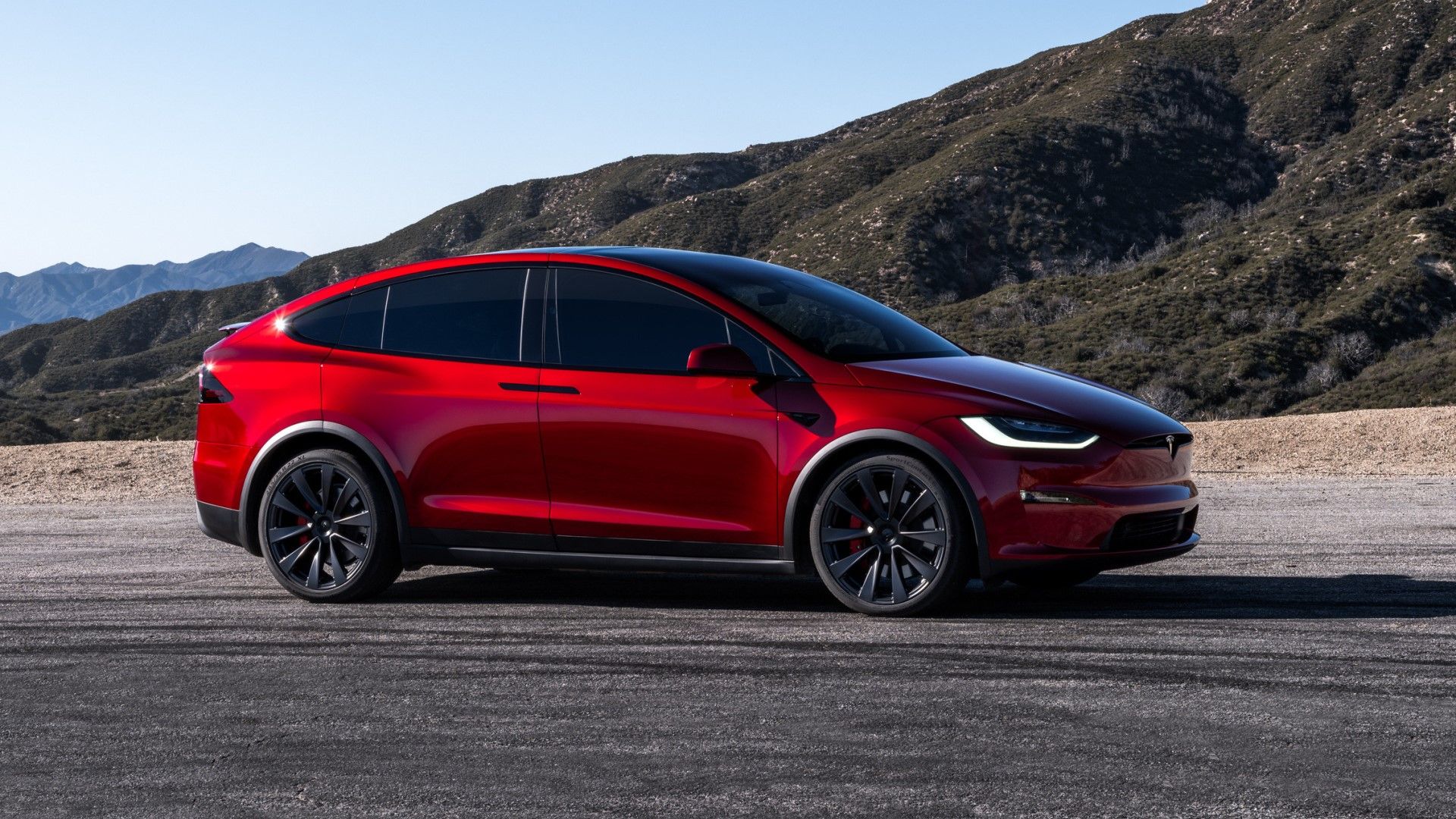
The Electric Vehicle That Depreciates The Least After 1 Year Of Ownership
EVs are known to depreciate more than ICE and hybrid cars, but among all EVs, this one stands to be the best after a year of ownership.
7 Ford Mustang Mach-E
$38,543 (29.8 Percent 1-Year Depreciation)
Despite what the name suggests, the Ford Mustang Mach-E is only a Mustang in terms of its name, but not by the way it drives. That’s not to say that it’s outright boring. In some ways, it handles better than a number of electric crossover SUVs, but it doesn’t deserve having the Mustang name attached to this electric crossover SUV. On the upside, even if you end up with the more affordable trims, the range it offers is competitive for the segment.
Performance Specifications
|
Select |
Premium |
Select AWD |
Premium AWD |
GT |
Rally |
|
|
Drivetrain |
Single motor, RWD |
Single motor, RWD |
Dual motor, AWD |
Dual motor, AWD |
Dual motor, AWD |
Dual motor, AWD |
|
Transmission |
1-speed AT |
1-speed AT |
1-speed AT |
1-speed AT |
1-speed AT |
1-speed AT |
|
Horsepower |
264 hp |
264 hp/290 hp |
325 hp/365 hp |
325 hp/365 hp |
480 hp |
480 hp |
|
Torque |
387 lb-ft |
387 lb-ft |
500 lb-ft |
500 lb-ft |
600 lb-ft/700 lb-ft |
700 lb-ft |
|
EPA Range |
250 miles |
250 miles/320 miles |
230 miles/300 miles |
230 miles/300 miles |
280 miles |
265 miles |
|
Battery Size |
72 kWh |
72 kWh/91 kWh |
72 kWh/91 kWh |
72 kWh/91 kWh |
91 kWh |
91 kWh |
|
0-60 MPH |
N/A |
N/A |
4.1 seconds (91 kWh battery) |
4.1 seconds (91 kWh battery) |
3.8 seconds/3.3 seconds |
3.4 seconds |
|
Towing Capacity |
N/A |
N/A |
N/A |
N/A |
N/A |
N/A |
(Data was collected from Ford)
The Mustang Mach-E is also eligible for the $4,000 tax credit for used EVs, but unfortunately, a brand-new Mustang Mach-E is not anymore eligible for the $7,500 or even just the $3,750 tax credit for brand-new EVs since January 2024. Therefore, if you want a Mustang Mach-E for yourself, you might want to consider going the slightly used route.
Pros
- Stylish design inside and out
- Reasonably fun to drive
- Competitive range
Cons
- Still not a true Mustang
- The low-speed ride is a bit firm
- A few cheap-feeling plastics inside
8 Mercedes-Benz EQS
$71,231 (47.8 Percent 1-Year Depreciation)
It sucks to be a Mercedes-Benz EQS owner, huh? Well, the buyers of these cars sure do have massive disposable incomes, so they probably wouldn’t care, but losing nearly half of its value in just one year makes this a financial liability to own. Well, flagship luxury cars, especially with their six-digit price tags, are really subject to a ton of depreciation. In fact, the top 20 list of iSeeCars also includes two other flagship luxury sedans, the Mercedes-Benz S-Class and BMW 7 Series.
Performance Specifications
|
EQS 450+ |
EQS 450 4Matic |
EQS 580 4Matic |
AMG EQS 53 |
|
|
Drivetrain |
Single motor, RWD |
Dual motor, AWD |
Dual motor, AWD |
Dual motor, AWD |
|
Transmission |
1-speed AT |
1-speed AT |
1-speed AT |
1-speed AT |
|
Horsepower |
329 hp |
335 hp |
516 hp |
649 hp (751 hp in boost) |
|
Torque |
417 lb-ft |
590 lb-ft |
631 lb-ft |
700 hp (752 lb-ft in boost) |
|
EPA Range |
350 miles |
340 miles |
340 miles |
277 miles |
|
Battery Size |
108.4 kWh |
108.4 kWh |
108.4 kWh |
108.4 kWh |
|
0-60 MPH |
5.9 sec. |
5.3 sec. |
4.1 sec. |
3.4 sec. |
(Data was collected from Mercedes-Benz)
However, those two full-size luxury sedans have one thing in common–an ICE or at least an option for an ICE in the case of the 7 Series. The EQS, however, is purely electric. A flagship luxury sedan is surely a recipe for massive depreciation, and you also have to remember that Mercedes just revealed a mid-cycle facelift for the EQS. Combined with the fact that a mid-cycle refresh of the EQS is arriving soon, this is a vehicle you should buy slightly used as opposed to brand-new. On the upside, the ride is plush, and the quietness is similar to a Rolls-Royce, though the MBUX Hyperscreen is too digital for our tastes.
Pros
- Extremely luxurious
- Unbelievably aerodynamic
- Impressively long range
Cons
- Jellybean styling doesn’t have a lot of fans
- Interior design is too digital
- Unnatural brake feel
